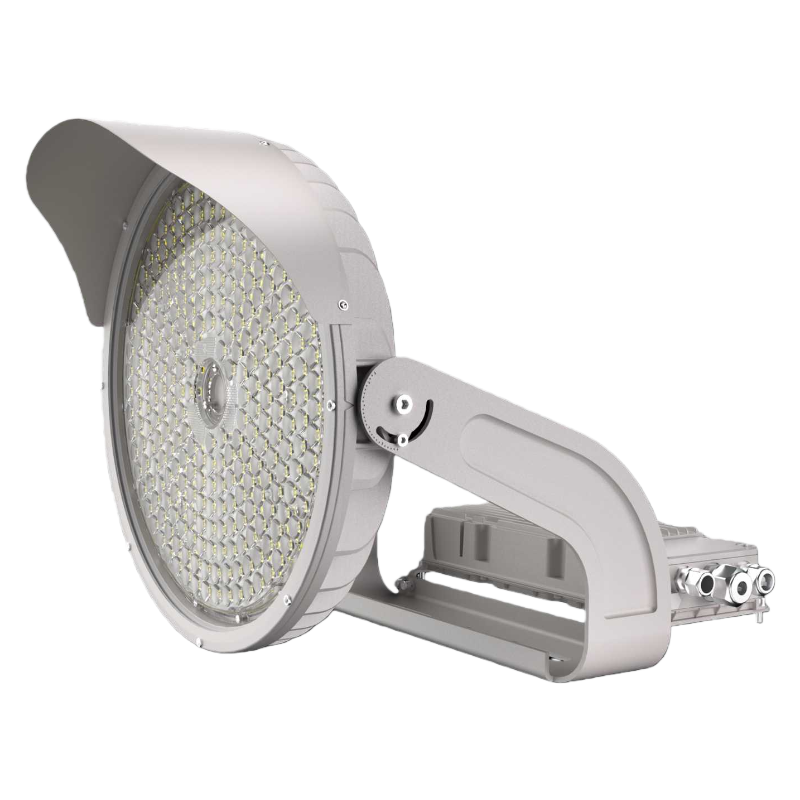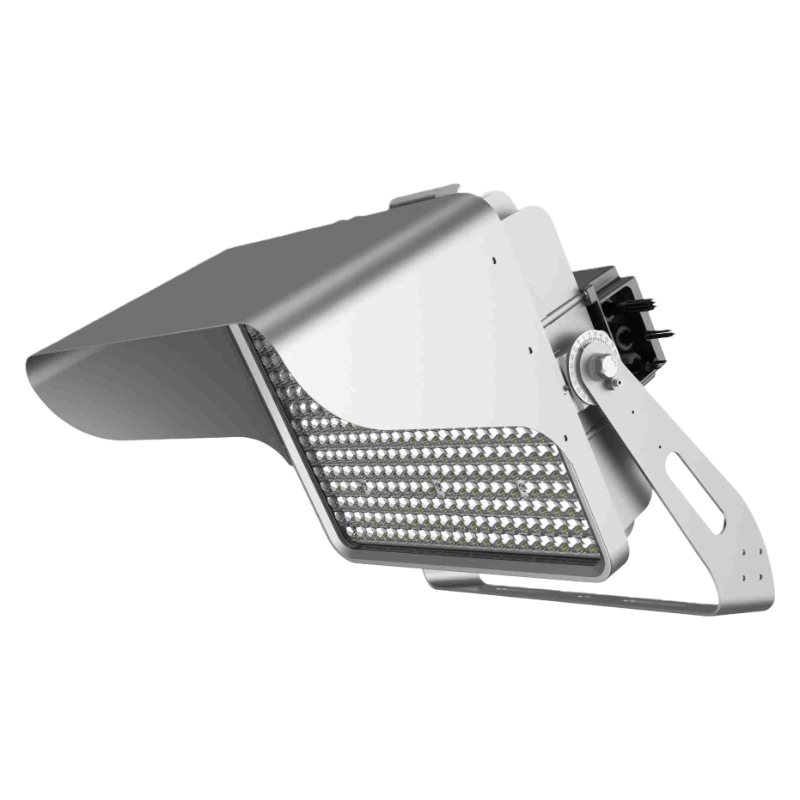What is Baseball Field Lighting Solutions?
Baseball Field Lighting
Tennis court lighting consists of lamps that provide adequate illumination and disperse light evenly. There are lamps on both sides of the tennis court for lateral lighting. In addition, two to three lamp poles are placed along the long axis.
Regardless of the game or the number of spectators, tennis courts must have proper lighting. This is to ensure that everyone can clearly see what is happening. Regardless of the speed or position of the ball, it should be clearly visible. Tennis court lighting will enhance the spectator experience and improve safety. It improves the performance of players by enhancing their vision.
Baseball Lighting Requirements and Standards
In baseball stadium lighting design, the focus is not just on lumens and wattage. Other factors, such as the average foot-candles required, the level of competition, the spectator capacity, and the specifications of the light poles, including their number and height, all play an integral role.
The basic unit of light is the lumen. When we talk about lighting requirements, we need to know the brightness level of an area at a certain distance from the light source. It is not enough to know how many lumens a light emits. That is why we talk about lux, which is the number of lumens per square meter.
As we mentioned before, the higher the level of competition, the higher the lighting requirements. Professional baseball stadiums require a lighting uniformity of 1,000 lux, or 1,000 lumens per square meter, at any point on the field. For training venues and elementary schools, this requirement is gradually reduced to 200 lux.
High School Baseball Fields: Lighting Standards
Taking into account the distance from home plate to the outfield fence, a typical high school baseball field is approximately 105,000 square feet and can accommodate up to 5,000 spectators. Baseball field lighting requires a balance of factors. According to IESNA recommendations, high school baseball fields require an average of 50 foot candles in the infield and 30 foot candles in the outfield.
When we convert these requirements to lumens and watts, an LED solution that provides 130 lumens per watt would require a wattage of approximately 24,000W to 32,000W to adequately illuminate a high school baseball field.
As we move to college or professional baseball, sports lighting requirements increase due to factors such as high-definition television broadcasts. College baseball fields typically require an average of 70 foot candles in the infield and 50 foot candles in the outfield. A course with 120,000 square feet would require between 46,000W and 92,000W of power, assuming the same LED lumen/watt output of 130.
These lighting levels depend on factors such as:
- Competition level and grade
- Spectator capacity
- Number of poles and location

Level of play and grade
The level of play is an important consideration. A local minor league ballpark will have different lighting requirements than a professional or college level ballpark. For example, a minor league ballpark may have lower foot candle requirements due to its smaller field and fewer spectators, while a professional ballpark will require more intensive lighting to accommodate television broadcasts and larger spectator capacities.
|
Level of Play |
Lighted Area |
Average Constant Light Levels |
Uniformity Ratio: Max to Min |
Maximum Rate of Change |
|
Little League Baseball |
INFIELD |
50 FC |
2:1 |
10% PER 10 FEET |
|
OUTFIELD |
30 FC |
2.5:1 |
10% PER 10 FEET |
|
|
Professional/Collegiate Baseball |
INFIELD |
150 FC |
1.3:1 |
10% PER 10 FEET |
|
OUTFIELD |
100 FC |
1.7:1 |
10% PER 10 FEET |
Spectator Capacity
The number of spectators that a field can accommodate also plays a role in determining sports lighting needs. Greater spectator capacity usually equates to higher sports lighting requirements. This is because larger audience areas need additional illumination for safety and visibility.
|
Baseball Class of Play |
Spectator Capacity |
Infield (FC) |
Outfield (FC) |
|
I (Professional Televised Game) |
Over 5,000 Spectators |
150 FC |
100 FC |
|
II (Collegiate Televised Game) |
Up to 5,000 Spectators |
100 FC |
70 FC |
|
III (High School & Little League Game) |
Up to 2,000 Spectators |
50 FC |
30 FC |
|
IV (Recreational & Tee Ball) |
Limited or no Provision for Spectators |
30 FC |
30 FC |
Baseball Field Size
Before introducing the distribution and height of light poles, let's first introduce the area of baseball fields, because this has a lot to do with the distribution of light poles. Baseball is a relatively unique sport because the size of the field varies, which depends entirely on the level of the game. For example, the field area of minor league baseball is relatively small. As the level of the sport improves, the area of baseball fields will also increase. At the same time, its illumination level is also closely related to the size of the field, because the playing field area of professional games is larger, and the corresponding illumination requirements are also higher.
The distance between each side of the base of a standard baseball field is 27.43 meters. The distance between home plate and the nearest fence, bleachers or other obstacles on the left and right outfield sidelines is at least 325 feet; in center field, the distance between home plate and the nearest fence, bleachers or other obstacles is at least 400 feet. However, some clubs can build smaller fields than the required area. For example, at lower levels of baseball, the pitch is 60 feet around the infield, high school, amateur and minor league games require 70 inches or more, and the professional game uses the standard 90 inches or 27.43 meters.
- The total area of the field: The larger the field, the taller the lighting poles must be, the more lighting fixtures you will need, and the more effectiveness/output each fixture will need.
- The distance to the home plate fence and the distance from the foul line to the field: The longer the distance from home plate to the fence, the greater the lighting output required. You must consider whether to install 4, 6, or even 8 poles to achieve the lighting level and uniformity you need for your facility. Additionally, the closer your foul line is to the field, the farther away you must place the poles.
For example, for a small baseball field with a radius of 200-250 feet, four poles may be sufficient, but for a professional/televised ballpark with a radius greater than 250 feet, six poles may be needed to evenly distribute light, and eight poles may be needed for a radius of 320 feet. Likewise, taller poles are beneficial for larger ballparks because they disperse light more evenly and reduce shadow areas.




Proper lighting requires careful consideration of the fixture mounting height, which is typically between 50 and 80 feet. However, it is important to note that specific situations may require an adjustment to this range. For example, in order to effectively control and reduce glare, a higher fixture mounting height may be required.
Additionally, the unique constraints of a baseball field can also affect the choice of pole height. For example, if the baseball field layout includes obstructions or requires the use of shared poles for multiple baseball fields, the poles may need to be mounted farther from the baseball field. In this case, using taller poles may become necessary to ensure optimal lighting throughout the baseball field.
Conclusion
Outdoor sports field lighting is often used to illuminate the field or stage in professional and amateur arenas and stadiums. For many years, customers have relied on the quality of ZC Lighting's proven LED sports lighting systems for new construction and renovation projects. Through this article, I hope you have a better understanding of baseball field lighting. ZC Lighting believes that it is very important to follow the appropriate standards and guidelines when it comes to professional baseball field lighting. This article mainly introduces the standards for baseball field lighting, including the illumination requirements and uniformity of the inside and outside fields, and also explains the size, layout and height of the light poles of the baseball field. It also tells us the advantages of LED lights in baseball field lighting applications. Finally, we give the cost and maintenance cost of LED solutions. I hope these can provide a little hint for your baseball field lighting. Of course, if you need our help with lighting design, we are also very happy to do so. In addition, if you have concerns about whether to renovate baseball field lighting, you can also evaluate the advantages of LED solutions. This article introduces LED solutions. Finally, I hope everyone can make a breakthrough in project design and find their favorite LED lights.







